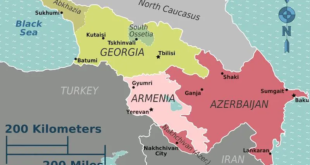 Only a few months ago, the Kremlin was talking about pricing its oil in rubles and making the ruble a regional reserve currency, giving it a status closer to that of the euro and the dollar.Â
Only a few months ago, the Kremlin was talking about pricing its oil in rubles and making the ruble a regional reserve currency, giving it a status closer to that of the euro and the dollar.Â
But that was before Russian tanks rolled into Georgia, the Russian stock market crashed and the price of oil fell by half.
Â
The ruble has declined steadily since the Aug. 7 start of the five-day war with Georgia, losing some 10 percent to 12 percent of its value against the dollar. Without intervention by the central bank, which began in early September, it might have fallen further, faster.
Â
Anton Struchenevsky, an economist at Troika Dialog investment bank, said Monday the Central Bank was spending $ 600 million a day to buy rubles and support the currency’s exchange rate, for a total of $ 20 billion in less than two months. Other experts put the cost of defending the ruble as high as $ 50 billion.
Â
While Russia has more than half a trillion dollars in foreign exchange reserves, Struchenevsky said: “This cannot last forever.”
Â
Some analysts think the Central Bank is trying to engineer a soft landing for the ruble – letting exchange rates fall to strengthen Russian industry by raising the costs of competitors’ imported goods. The aim would be to let the ruble slide gradually to avoid causing panic.
Â
Andrei Illarionov, a former Kremlin adviser and now a government critic, told reporters Monday that “the Central Bank, to safeguard itself, made a decision to start a devaluation, a soft devaluation of the ruble.”
Â
Allowing the ruble to fall too quickly would contradict the Kremlin’s official line, which is that the Russian economy remains healthy, vibrant and largely insulated from the impact of any global recession. The currency’s strength and stability had until recently been a proud symbol of the country’s rise from the ashes of its 1998 economic crisis.
Â
Governments can either set an official exchange rate, sometimes based on another currency, or let their currencies float – let the international currency trading market set the rates.
Â
Russia’s Central Bank pegs the ruble to a so-called “basket” of the dollar and the euro, allowing it to float only within a narrow range. The aim is to avoid the economic shock of sudden swings in the currency’s value.
Â
A decision to abandon the peg and float the ruble “would doom the banking sector,” said Nataliya Orlova, chief economist at Alfa Bank. “There is a nervous mood in the air, but if the ruble loses state support, there will be panic. People would be withdrawing rubles from their deposits and converting them into dollars.”
Â
Yegor Gaidar, an economist and former prime minister, last week praised the government’s efforts to support the ruble. “This is a smart decision,” he said. “We absolutely do not need panic on the currency market.”
Â
Until this summer, the ruble had been gaining for several years on the back of higher prices for Russian commodities, especially oil and gas. The ruble strengthened to 23.14 against the dollar in July, its highest level in 9 years.
Â
But the currency’s fortunes have reversed dramatically in the past three months. It hit a 20-month low Friday, trading at 26.4 rubles to the dollar. On Monday, it ticked up a hair to 26.3.
Â
Meanwhile, some of Moscow’s sidewalk currency exchanges over the weekend were selling dollars for more than 28 rubles – the result, apparently, of whispers that the Kremlin was about to let the ruble float against international currencies.
Â
The Central Bank reassured markets it would continue to support the Russian currency, and introduced measures Monday to limit traders who used currency swaps to profit from the ruble’s decline.
Â
Oil prices also rose modestly Monday, further strengthening the ruble.
Â
Some analysts say Russia’s economy remains relatively healthy and the currency should show more resilience, but many Russians remember the 1998 currency collapse.
Â
“The ruble has been steadily growing in the past few years on capital inflows, but a large part of people and businesses still have no faith in the ruble,” said Evgeny Nadorshin, chief economist at Trust Investment Bank.
Â
A rapid devaluation would not just undermine faith in the currency; it could cause political problems for the Kremlin as well. Many Russian regard the 1990s, a crippling period of poverty and turmoil, as a time of political and economic humiliation.
Â
But Russia was in a much weaker economic position 10 years ago, and no one expects a replay.
Â
Even if the government decided to let the ruble float, Struchenevsky said, there would be no repeat of 1998, when the value of the ruble dropped fourfold and inflation surged to 80 percent.
Â
Besides helping domestic manufacturers, he added, it would allow the government to adopt more flexible economic policies.
Â
Source: AP
 Eurasia Press & News
Eurasia Press & News



